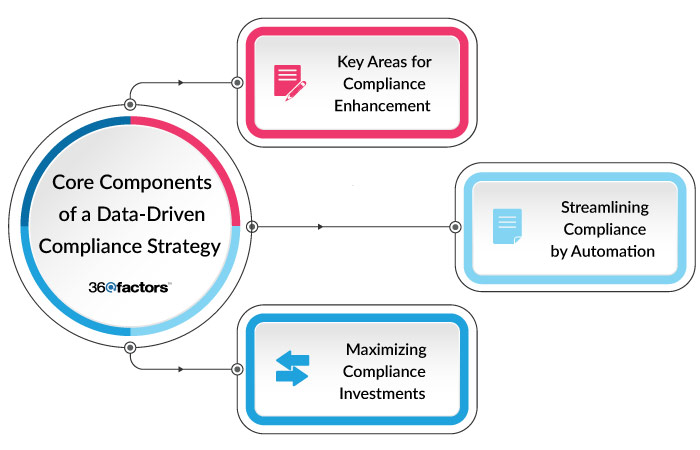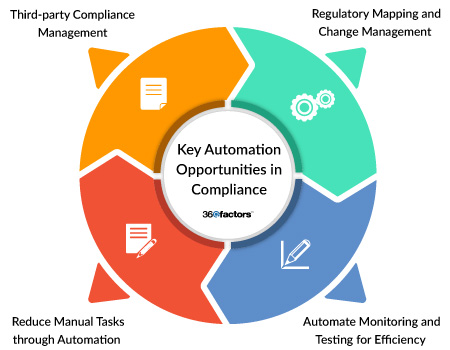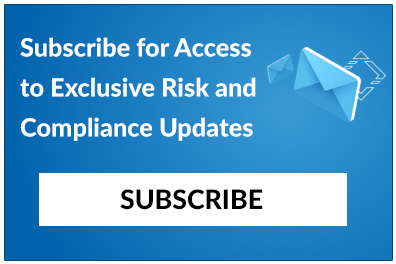Home/ Blog / Enhancing Effective Compliance Management Through Technology and Data-Driven Solutions
Effective compliance management has become a critical function for businesses to stay ahead, given the increasing regulatory complexity and technological innovation. Regulators demand higher accountability, transparency, and adaptability, which have become difficult with traditional methodologies. However, with the power of technology and data-driven solutions, compliance professionals are empowered to streamline operations, evolve risks, and meet heightened expectations, instilling a sense of confidence and control.
Technological innovations such as advanced analytics, automation, and AI have revolutionized compliance frameworks. These tools allow for dynamic regulatory risk management and ongoing improvements. Solutions like predictive modeling and automated data analysis enable companies to shift from reactive to proactive approaches, addressing potential concerns before they materialize.
This blog will delve into the essential components of a data-driven compliance management strategy and the opportunities it presents for leveraging technology and automation.
Core Components of a Data-Driven Compliance Strategy
Executing a data-driven compliance approach requires companies to reimagine conventional strategies and concentrate on critical areas that align with shifting regulatory demands. This involves detecting and managing regulatory changes by leveraging advanced analytics, made possible through an effective compliance management team. Let’s discuss the key components that define a successful compliance management system.

Critical Areas for Compliance Enhancement
Managing Technology Risks Proactively
Technology risks for compliance management have become a priority with the increasing adoption of advanced technologies such as cloud solutions, AI, and process automation. Regulators scrutinize a company’s ability to integrate technology without compromising reliability, safety, or accountability. An effective compliance management approach is comprised of the following:
Continuing Testing and Validation: Ensure technological systems are free from biases, operate reliably, and adhere to regulatory standards.
Data Governance Frameworks: Establish clear policies for data usage, privacy, and access control to mitigate vulnerabilities.
Transparency and Accountability: Maintain documentation of how compliance technologies are used and ensure oversight mechanisms are in place.
Ensuring Data Integrity and Accuracy
Accurate and reliable data is the primary requirement for an effective compliance management program. Data integrity ensures that procedures and analytics provide meaningful insights. Companies can attain this by:
Implementing data standardization during initial technology implementation.
Collaborating with process owners to address gaps in data availability and quality.
Regularly auditing and updating data to ensure it remains relevant and actionable.
Attracting and Retaining Skilled Compliance Talent
As compliance becomes increasingly data-driven, organizations must invest in obtaining and retaining talent with the right skill sets. This includes proficiency in data analytics, and technology integration. Strategies to achieve this include:
Advancing training programs that upskill employees in emerging compliance technologies.
Ensuring workforce expertise diversity to address complex and evolving compliance challenges.
Appropriate resource allocation ensures that the compliance team can focus on value-driven initiatives rather than routine tasks.
Streamlining Compliance by Prioritizing Automation
Effective compliance management modernization reduces errors, streamlines procedures, and ensure compliance. The dependence rate on automated systems is growing to manage recurring and resource-intensive activities, enabling compliance teams to concentrate on strategic priorities. Core areas like regulatory mapping, monitoring, and compliance-breach risk evaluations benefit significantly from automation.
For example, automating regulatory change mapping ensures that companies stay updated with evolving compliance requirements by efficiently tracking and integrating regulatory changes. Likewise, automated monitoring and testing through compliance management software enhances the accuracy and consistency of policies, identifying patterns and potential regulatory risks. Efficient Compliance Investments for Business Growth
Efficient compliance investment is key to promoting sustainable business growth, particularly for banks that surpass certain regulatory thresholds, such as $10 billion in assets. Compliance management frameworks can enhance operational efficiency and reinforce consumer trust when strategically aligned with business objectives.
The increased regulatory requirements, including increased oversight by agencies like the CFPB, necessitate robust compliance management systems (CMS). These systems can help businesses address regulatory mandates and provide a foundation for improved governance, compliance, and data-driven decision-making. Integrating advanced technologies, such as automation and analytics, through effective compliance management streamlines compliance processes, reducing costs while improving accuracy and response times.
Key Automation Opportunities in Compliance
Automation swiftly enhances compliance management by dealing with critical challenges and driving efficiency. Below, we explore some of the most valuable areas where automation reshapes compliance functions.

Enhancing Compliance with Regulatory Mapping and Change Management
Regulatory mapping and change management are critical activities in effective compliance management, yet they are often resource-intensive and prone to human error. Automation substantially improves these processes by enabling organizations to track real-time regulatory changes and map them seamlessly to internal policies and controls. Advanced automation tools can monitor global regulatory sources, notify compliance teams of updates, and assess the potential impact of new regulations.
Automating Monitoring and Testing for Efficiency
Monitoring and testing are critical for identifying and mitigating compliance risks, but traditional means to do so are often labor-intensive and limited in scope. Automation transforms these activities by enabling dynamic, full-scale reviews of transactional data and compliance activities. Automated systems can analyze large datasets to highlight anomalies, trends, and potential risks that might go unnoticed.
Reducing Manual Supervisory Tasks through Automation
Supervisory tasks, such as routine checks and documentation reviews, consume significant time and resources in effective compliance management operations. Automation alleviates this burden by simplifying repetitive, predictable tasks, allowing compliance teams to focus on areas requiring strategic decision-making and subject matter expertise. Automated tools streamline workflows, ensure consistency in supervisory activities, and enhance the accuracy of routine compliance checks.
Optimizing Third-Party Management with Automated Solutions
Third-party relationships often introduce complex compliance risks, including cybersecurity vulnerabilities, ethical supply chain issues, and data privacy concerns. Automation streamlines third-party management by enabling organizations to conduct thorough due diligence efficiently and cost-effectively. Automated, effective compliance management solutions can aggregate and analyze vendor, supplier, and contractor data, flagging potential compliance risks and reducing record duplication.
Integrate Technology to Automate Your Compliance Processes
Integrating tech-based solutions in today’s compliance management program has become a necessity. Financial organizations come across several compliance challenges in terms of regulatory scrutiny. Automation and data-driven solutions provide the means to streamline processes, improve the compliance posture, and enhance overall operational efficiency. Organizations can proactively address compliance challenges, reduce costs, and build resilience by integrating effective compliance management software like Predict360.
Predict360 Compliance Management Software exemplifies the transformative potential of technology in compliance. Its robust features, from automated compliance monitoring to real-time monitoring dashboards, empower businesses to meet regulatory expectations and turn compliance into a driver of growth and efficiency. By automating routine tasks and enhancing decision-making capabilities, the Predict360 Compliance Management Software helps organizations reduce the cost of compliance while achieving higher standards of regulatory adherence.
Request a Demo
Complete the form below and our business team will be in touch to schedule a product demo.
By clicking ‘SUBMIT’ you agree to our Privacy Policy.



